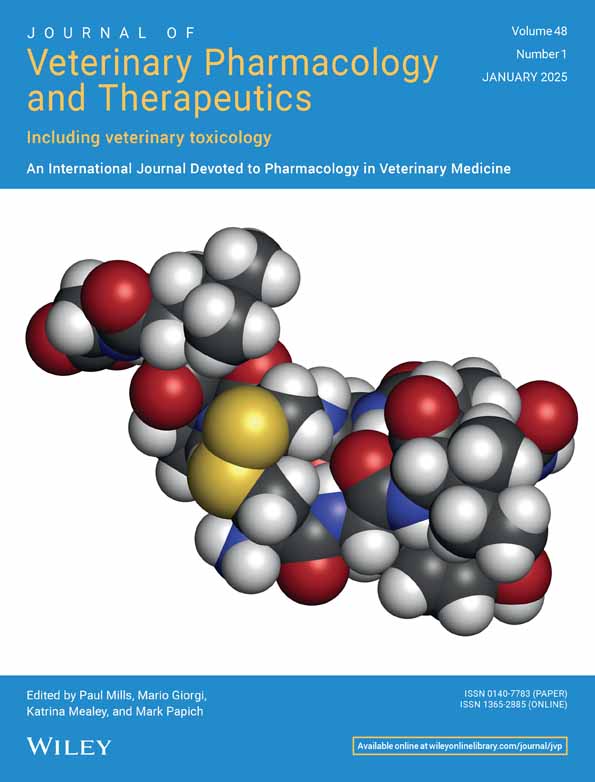In Situ Uterine Artery Prostaglandin E2 and Nitric Oxide in Open-Cervix Pyometra and Medically Treated Bitches
ABSTRACT
Uterine vascular alterations take place in pyometra bitches speculatively influenced by prostaglandin and nitric oxide pathways. However, no causative effect of nitric oxide on endometrial vascularization was proved elsewhere for medically treated pyometra bitches. This study aimed to identify the main in situ uterine artery vasodilation pathway in pyometra bitches medically treated with antigestagen solely or coupled with prostaglandin. Pyometra bitches were enrolled into groups: Ovariohysterectomy at diagnosis (Control-OHE; n = 7), Antigestagen (10 mg/kg aglepristone on Days 1, 2, and 8 after diagnosis; n = 5), and Antigestagen + luteolytic (aglepristone plus 1 μg/kg of cloprostenol from Days 1–7; n = 5). Treated bitches were ovariohysterectomized after 8 days of treatment. Uterine artery fragments from all bitches were collected for tissue nitric oxide and prostaglandin E2 assays. Control-OHE group had lower uterine artery concentration of nitric oxide compared to treated bitches (Antigestagen and Antigestagen + luteolytic groups). No significant difference was verified between the medical treated groups. Uterine artery concentration of prostaglandin E2 was not different between control and treated bitches, as well as between both treated groups. In conclusion, nitric oxide and prostaglandin E2 are not directly involved in vascular modulation of the uterine artery, albeit pyometra medical treatment influences nitric oxide concentration in the uterine artery.
Conflicts of Interest
The authors declare no conflicts of interest.
Open Research
Data Availability Statement
Data are contained within the article or supplementary material.




